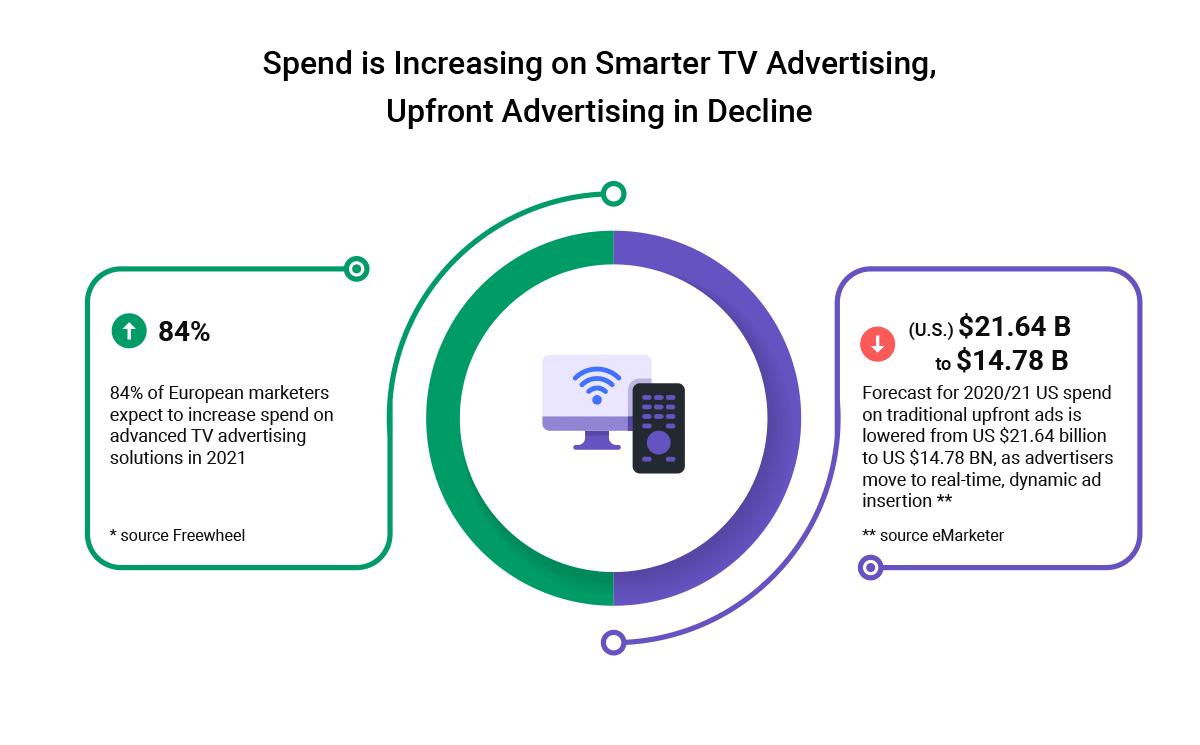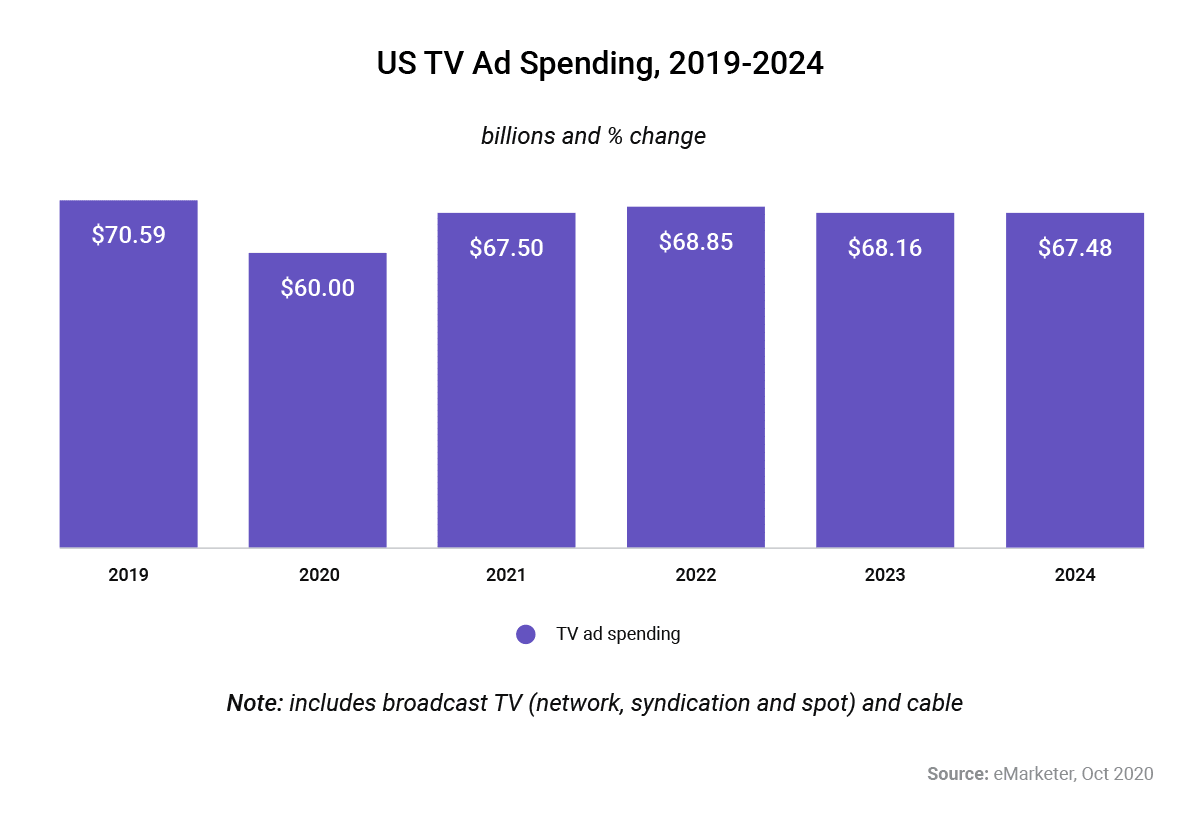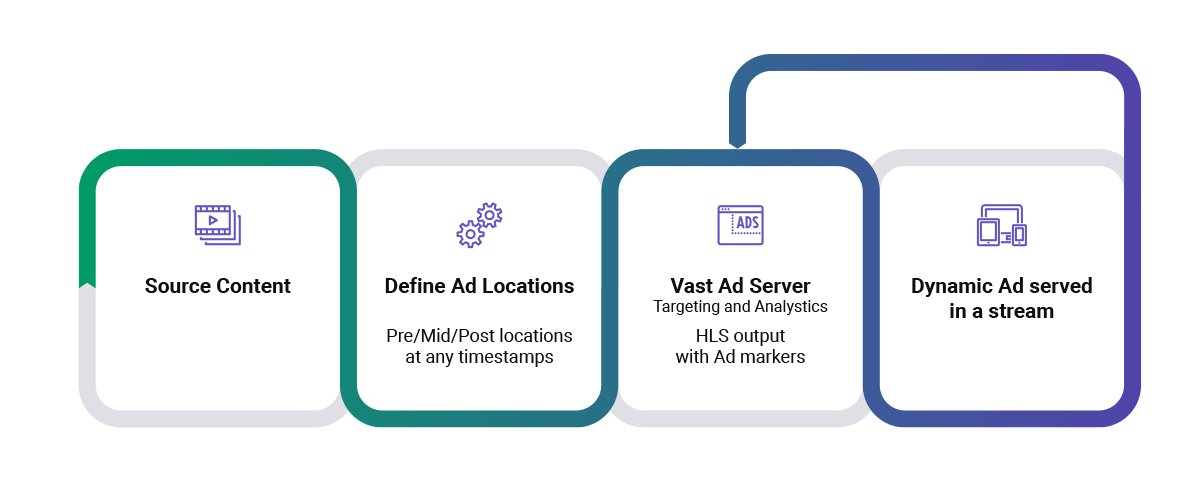Improved viewing experience is what ultimately separates online video-on-demand (VOD) from traditional TV. Today, consumers expect more from the services they’re using, not only in terms of content quality but the relevance of the commercials they’re exposed to.
Global spending on smart devices, including smart TVs, is rising—and advertisers know it. That’s why they’ve been channeling budgets towards more effective campaigns. Traditional campaigns were based on the same-for-all approach and focused on viewing demographics to be effective. However, the new wave of TV advertising is moving away from the traditional approach as Millennial and Gen Z viewers have different expectations, including greater personalization.

Using free commercial-supported TV with dynamic ad insertion (DAI), brands compete with each other to get viewers to engage more easily than before. Let’s talk about how targeted advertising can help your company gain visibility and take advantage of new business opportunities.
Leading the Industry with DAI and Manifest Manipulation
Competition among TV providers has been growing in the past few years. What’s more, all the big names are struggling to position themselves on the market, and many are leaning towards over-the-top (OTT) services so they can offer personalized content to improve engagement rates. By leveraging data like location, demographics, and purchasing history, personalized ads are becoming a new industry standard for AVOD services.
Targeted and dynamic ad insertion provides more opportunities to boost advertising and increase sales. Catering to the needs of different audiences is very challenging, and that’s where DAI demonstrates its full potential. For TV providers, better advertising means an increase in rates for ad slots, and for advertisers—higher ROI.
Advertising messages have a stronger impact when they are relevant. With DAI, ads can be switched instantly to pinpoint the viewer’s interests.

How DAI Works
Dynamic ad insertion is a server video ad technology that places ads into live linear and on-demand video content. It is also called server-side ad insertion (SSAI) or ad stitching, as the process adds content and ads into a single video stream.
It connects video content and ads into a single stream, removing ad requests and responses from the SDK. With DAI, your users can enjoy a seamless watching experience without any latency. With dynamic ad insertion, ads can easily be integrated, measured and delivered by any VAST server to provide an optimal viewer experience across various devices.

Ad-supported Video-On-Demand (AVOD)
Ad-supported video on demand is a business model that’s bringing substantial revenue to a large number of VOD and linear TV providers. Services like Pluto are free to subscribers, so their entire revenue comes from ads. On the other hand, Hulu offers a paid subscription model and still manages to have high revenue from ads.
Manifest Manipulation
There are three primary types of dynamic manifest manipulation:
- Manifest conditioning
- Manifest builder or playlist re-write
- Dynamic manifest manipulation (DMM)
Deployment Models
A manifest can be altered at different stages in the video delivery workflow and multiple deployment models used. Service providers decide on the optimal architecture that will precisely define blackout areas and delivery zones.
What manifest manipulation can do:
- Insert ads
- Insert alternate content
- Limit or expand the bit rates
Benefits of Using DAI
At this point, every company interested in driving more subscribers to its platform needs to focus its attention on DAI solutions, because these provide a custom touch that traditional types of commercials can not. Moreover, the technology can adapt to different bandwidths to override poor connections by rendering lower quality buffer-free video streaming.
Data access. Advances in cloud-based video processing and big data make it more interesting for major TV providers to work with targeted audience segments. In order to advertise smartly, providers must the cost per mille (CPM) rates.
Adaptable and dynamic. DAI makes it possible for planning for a specific time slot to be changed dynamically based on predefined data. When an ad matches the viewer’s interests, it typically translates into higher conversion rates.
No ad blockers. DAI’s big advantage is that it makes commercials and content look the same to ad-blocking software, which allows commercials to reach the screen.

The Long and Short of DAI
Cloud-based media processors can now provide various market opportunities with advanced advertising. The replacement of traditional commercial breaks with digital ads is happening at both live events and pre-recorded ones.
The use of DAI evades ad blockers and works well on multiple devices and platforms. Ultimately, it improves user experience, boosts revenues, and allows broadcasters to monetize across platforms by offering personalized content to audiences.
At Softjourn, we know how important it is to provide your viewers with a quality product. Let’s get together and discuss dynamic ad insertion and the future growth of your service.









